The Discovery of THCA: When and How Scientists First Identified This Cannabinoid
The discovery of tetrahydrocannabinolic acid (THCA) represents a pivotal moment in cannabis science, yet many people don't know the fascinating story behind how scientists first identified this crucial cannabinoid. While THC became a household name in the 1960s, THCA remained relatively unknown despite being the actual form in which THC exists in living cannabis plants.
Understanding when THCA was discovered helps us appreciate the evolution of cannabis research and why this non-intoxicating compound is gaining attention today. The story of THCA discovery involves brilliant scientists, groundbreaking laboratory techniques, and a systematic approach to understanding one of nature's most complex plants.
This comprehensive exploration will take you through the timeline of discovery, the pioneering scientists who made it possible, the sophisticated methods they employed, and how this discovery continues to shape our understanding of cannabis today. Whether you're a cannabis enthusiast, a student of scientific history, or simply curious about cannabinoid discovery, this journey through time reveals how far we've come in understanding these remarkable compounds.
The Timeline of THCA Discovery: A Historical Breakthrough
The Golden Year: 1965
THCA was first isolated and identified in 1965 by a team of Israeli scientists led by Dr. Raphael Mechoulam and Y. Gaoni. This discovery came remarkably shortly after their groundbreaking isolation of THC in 1964, demonstrating the rapid pace of cannabis research during this period. The research team at the Weizmann Institute of Science in Rehovot, Israel, was conducting systematic studies of cannabis compounds when they noticed something peculiar: fresh cannabis plant material contained a different molecular structure than the THC they had previously identified.
The THCA research timeline shows that this discovery wasn't accidental but rather the result of meticulous scientific investigation. Using chromatography techniques available at the time, they observed that raw cannabis contained an acidic precursor to THC. This compound had a carboxylic acid group (COOH) attached to its molecular structure, making it chemically distinct from THC.
The Context of Discovery
To understand the significance of THCA identification, we must first appreciate the scientific landscape of the 1960s. Cannabis research was still in its infancy, and many of the plant's compounds remained mysterious. The isolation of THC in 1964 had been a watershed moment, finally identifying the primary psychoactive component of cannabis that had eluded scientists for decades.
However, as Mechoulam's team continued their work, they encountered a puzzling observation: the THC content in dried cannabis samples was significantly higher than in fresh plant material. This discrepancy led them to investigate further, ultimately revealing that cannabis plants don't actually produce THC directly. Instead, they synthesize THCA, which then converts to THC through a process called decarboxylation.
Early Research Methodology
The 1960s research environment was vastly different from today's high-tech laboratories. Scientists working on cannabinoid discovery had to rely on relatively primitive equipment by modern standards, yet they achieved remarkable results. The team had to develop novel approaches to extract and isolate cannabis compounds, as standardized methods didn't exist.
They began with several kilograms of hashish sourced from Lebanon, which they extracted using sophisticated solvent techniques. The extract was then subjected to multiple rounds of chromatographic separation, a painstaking process that could take weeks or even months to complete properly. Each fraction had to be carefully analyzed to determine its chemical composition and properties.
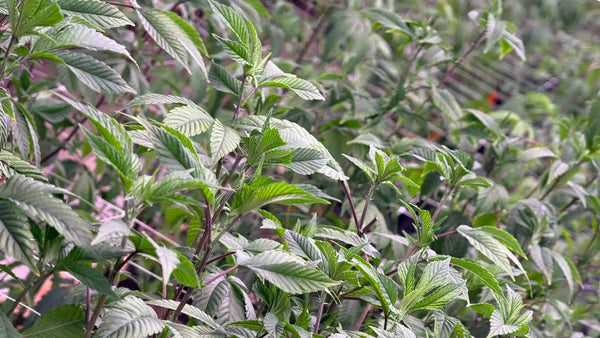
Who Discovered THCA: The Scientists Behind the Breakthrough
Dr. Raphael Mechoulam: The Father of Cannabis Research
When discussing who found THCA, the name Dr. Raphael Mechoulam stands out as the central figure in this discovery. Born in Bulgaria in 1930, Mechoulam moved to Israel after World War II and eventually became a professor of medicinal chemistry at the Hebrew University of Jerusalem. His interest in cannabis began in the early 1960s, when he realized that while morphine and cocaine had been isolated and studied for decades, the active compounds in cannabis remained largely unknown.
Mechoulam's approach to cannabis research was systematic and methodical. He believed that understanding the plant's chemistry was fundamental to understanding its effects on the human body. This philosophy drove him to isolate not just THC and THCA, but eventually over 100 different cannabinoids throughout his career. His work on the THCA history laid the foundation for decades of subsequent research.
Y. Gaoni: The Collaborative Partner
Y. Gaoni, Mechoulam's colleague at the Weizmann Institute, played a crucial role in the THCA discovery. While Mechoulam often receives the lion's share of credit, Gaoni's contributions to the analytical chemistry and structural determination were invaluable. Together, they formed a complementary team, with Mechoulam focusing on the biological aspects and Gaoni excelling in chemical analysis and structural elucidation.
The Supporting Team
The discovery of THCA wasn't the work of just two individuals. A larger team of researchers, technicians, and graduate students contributed to this groundbreaking work. The Weizmann Institute provided the resources, equipment, and institutional support necessary for such ambitious research. This collaborative environment was essential for the systematic study of cannabis compounds that led to the identification of THCA and other cannabinoids.
The Scientific Methods Used: Innovative Techniques of the 1960s
Extraction and Isolation Procedures
The identification of THCA required sophisticated laboratory techniques for the 1960s. The first step in the THCA identification process involved extracting cannabinoids from plant material. Mechoulam's team used various organic solvents, including petroleum ether and ethanol, to dissolve the resinous compounds from cannabis. This created a crude extract containing hundreds of different compounds that needed to be separated.
The extraction process itself was an art as much as a science. The team had to optimize solvent ratios, extraction times, and temperatures to maximize cannabinoid yield while minimizing degradation. Fresh cannabis material was particularly challenging because THCA could easily convert to THC if the extraction conditions weren't carefully controlled.
Column Chromatography: The Separation Workhorse
Column chromatography was the primary method used to separate cannabis compounds during the cannabinoid discovery era. This technique involves packing a glass column with a stationary phase (such as silica gel or alumina) and then passing the crude extract dissolved in a mobile phase (solvent) through the column. Different compounds move through the column at different rates, allowing them to be separated and collected individually.
For THCA isolation, the team used multiple rounds of chromatography, sometimes employing different stationary and mobile phases to achieve better separation. This process was time-consuming and required significant expertise to interpret the results correctly. The elution patterns had to be carefully monitored, and fractions were collected and analyzed systematically.
Nuclear Magnetic Resonance (NMR) Spectroscopy
To determine the molecular structure of the newly isolated compound, the researchers employed nuclear magnetic resonance (NMR) spectroscopy. This technique was relatively new in the 1960s but proved invaluable for determining molecular structures. NMR spectroscopy provides information about the number and types of hydrogen and carbon atoms in a molecule, as well as how they're connected.
The NMR data for THCA showed clear evidence of the carboxylic acid group (COOH) that distinguished it from THC. The spectra revealed specific signals corresponding to the acidic proton and the carbon atoms of the carboxyl group. By comparing THCA's NMR spectrum with that of THC, the researchers could identify the precise location and nature of the structural difference.
Mass Spectrometry: Confirming Molecular Weight
Mass spectrometry was another critical tool in confirming the THCA discovery. This technique determines the molecular weight of a compound by ionizing it and measuring the mass-to-charge ratio of the resulting ions. The mass spectrum of THCA showed a molecular weight approximately 44 atomic mass units higher than THC, corresponding exactly to the mass of a carboxylic acid group (COOH).
This mass difference provided crucial confirmatory evidence that THCA was indeed the acidic precursor to THC. The fragmentation pattern in the mass spectrum also provided clues about the compound's structure, showing how it would break apart under certain conditions and confirming the presence and location of the carboxylic acid group.
Chemical Analysis and Derivatization
To further confirm the presence of the carboxylic acid group, the researchers performed classical chemical analyses. They tested THCA's reactivity with various reagents known to react with carboxylic acids. These reactions provided additional confirmation of THCA's structure and helped distinguish it from other potential compounds.
One particularly revealing experiment involved heating THCA and observing its conversion to THC. The researchers noticed that when THCA was exposed to heat, it lost its carboxylic acid group through a process called decarboxylation, converting into THC. This transformation released carbon dioxide (CO₂) and resulted in a compound with properties identical to the THC they had previously isolated. This chemical behavior explained why smoking or cooking cannabis produced psychoactive effects while consuming raw cannabis did not.
Why the Discovery of THCA Mattered: Scientific and Practical Implications
Understanding Cannabis Chemistry
The discovery of THCA was crucial because it fundamentally changed scientists' understanding of cannabis chemistry. Prior to this discovery, researchers assumed that THC existed naturally in the plant. The revelation that living cannabis plants don't actually produce THC directly, but instead synthesize THCA, was paradigm-shifting. This finding in the THCA history explained numerous observations that had puzzled researchers.
For instance, it clarified why fresh cannabis wasn't particularly psychoactive when eaten raw, despite containing what seemed like high levels of cannabinoids. The distinction between THCA and THC also explained why traditional methods of cannabis consumption—smoking, vaporizing, or cooking—all involved heat, which was necessary to convert THCA into the psychoactive THC.
Explaining Decarboxylation
The THCA research timeline shows that understanding decarboxylation became central to cannabis science. Decarboxylation is a chemical reaction in which a carboxylic acid group (COOH) is removed from a molecule, releasing carbon dioxide (CO₂). This process occurs naturally when cannabis is exposed to heat, light, or prolonged storage, but it can also be controlled and optimized in laboratory or kitchen settings.
The discovery of THCA and its decarboxylation to THC explained the chemical transformation that occurs when cannabis is heated. This knowledge became fundamental for understanding:
- Why different consumption methods produce different effects
- How to optimize cannabis preparation for desired outcomes
- Why aged cannabis may have higher THC content than fresh material
- How to preserve THCA in products designed to deliver it without conversion
Opening Doors to Other Acidic Cannabinoids
The identification of THCA revealed that living cannabis plants don't produce neutral cannabinoids but rather acidic precursors. This insight led researchers to discover other acidic cannabinoids, including:
- CBDA (Cannabidiolic Acid): The precursor to CBD, with its own therapeutic properties
- CBGA (Cannabigerolic Acid): Often called the "mother cannabinoid" because it's the precursor to THCA, CBDA, and CBCA
- CBCA (Cannabichromenic Acid): The precursor to CBC
- THCVA (Tetrahydrocannabivarinic Acid): The precursor to THCV
This expanded understanding of cannabinoid discovery showed that the cannabis plant's biochemistry was far more complex than initially thought. Each acidic cannabinoid could potentially have unique properties and therapeutic applications independent of its decarboxylated form.
Insights into Biosynthesis Pathways
Understanding when THCA was discovered and its role in the plant helped scientists map out the biosynthesis pathways in cannabis. Researchers learned that cannabis plants produce cannabinoids through a series of enzymatic reactions, starting with basic building blocks and progressing through increasingly complex molecules.
The biosynthesis pathway begins with olivetolic acid and geranyl pyrophosphate, which combine to form CBGA. Specific enzymes then convert CBGA into THCA, CBDA, or CBCA. This knowledge has been crucial for:
- Breeding programs aimed at producing specific cannabinoid profiles
- Genetic engineering efforts to enhance cannabinoid production
- Understanding how environmental factors affect cannabinoid synthesis
- Developing methods to produce cannabinoids through biosynthesis rather than extraction
Setting the Stage for Modern Research
Perhaps most importantly, the discovery of THCA laid the groundwork for modern cannabis science. It established that cannabis compounds were worthy of serious scientific investigation and that the plant held far more complexity than previously recognized. This pioneering work in the THCA history encouraged subsequent generations of researchers to explore cannabis systematically and rigorously.
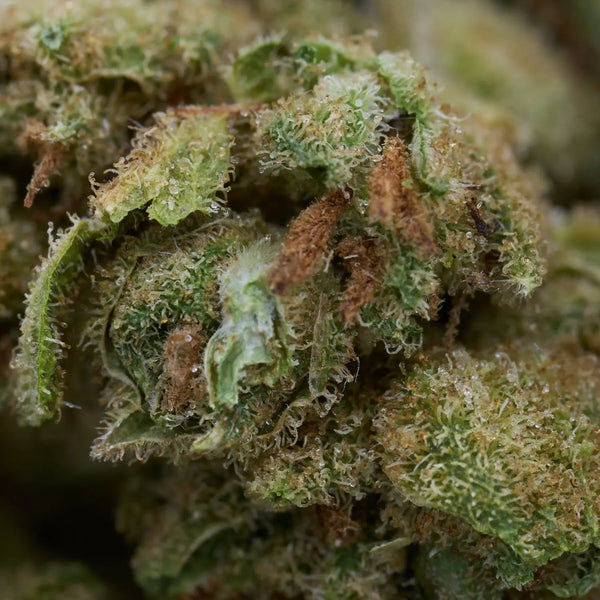
Initial Reception and Research Gaps: The Lost Decades
Limited Early Interest
Despite its discovery in 1965, THCA research remained surprisingly limited for decades. Most scientific attention focused on THC and its psychoactive properties, which were of greater interest to both researchers and law enforcement. THCA was initially viewed merely as a precursor compound rather than a cannabinoid with its own potential benefits.
This narrow focus on THC created significant gaps in the THCA research timeline. Between 1965 and the late 1990s, relatively few studies examined THCA's independent properties. Scientists assumed that because THCA wasn't psychoactive, it likely wasn't therapeutically interesting either—an assumption that would later prove incorrect.
Regulatory Obstacles
The legal status of cannabis created substantial barriers to research. Even for compounds like THCA that aren't psychoactive, obtaining approval to conduct studies was extremely difficult. Researchers faced bureaucratic hurdles, funding challenges, and social stigma associated with cannabis research. These obstacles significantly slowed the pace of discovery regarding THCA's properties and potential applications.
Technological Limitations
Early analytical methods, while groundbreaking for their time, had limitations that hindered THCA research. Detecting and quantifying THCA in plant material required sophisticated equipment that wasn't widely available. Additionally, THCA's tendency to convert to THC during sample preparation and analysis made it difficult to obtain accurate measurements.
The Turning Point: 1990s-2000s
It wasn't until the 1990s and 2000s that researchers began investigating THCA's unique properties independent of THC. Several factors contributed to this renewed interest:
- Discovery of the Endocannabinoid System: The identification of cannabinoid receptors (CB1 and CB2) in the early 1990s sparked renewed interest in all cannabinoids, including THCA
- Improved Analytical Techniques: Advanced chromatography and mass spectrometry made it easier to study THCA without unwanted decarboxylation
- Growing Medical Cannabis Movement: Patients and advocates began reporting benefits from consuming raw cannabis juice, which contains THCA
- Scientific Curiosity: Researchers began questioning the assumption that only decarboxylated cannabinoids had therapeutic value
Modern Research Directions
Today's research on THCA discovery applications includes investigating:
- Anti-inflammatory Properties: Studies suggest THCA may reduce inflammation through mechanisms distinct from THC
- Neuroprotective Effects: Research indicates potential benefits for neurodegenerative conditions
- Anti-nausea and Anti-emetic Properties: Clinical observations suggest THCA may help with nausea and vomiting
- Anti-proliferative Effects: Early research explores THCA's potential in inhibiting cell proliferation
- Metabolic Effects: Studies examine THCA's influence on metabolism and metabolic disorders
The Legacy of Discovery: THCA in Modern Cannabis Science
Current Understanding
Nearly 60 years after who found THCA, our understanding of this cannabinoid continues to evolve. Modern research has revealed that THCA interacts with the body's endocannabinoid system differently than THC. While THC primarily binds to CB1 and CB2 receptors, THCA appears to work through alternative pathways, including:
- Interaction with TRPM8 (transient receptor potential cation channel subfamily M member 8)
- Modulation of PPARγ (peroxisome proliferator-activated receptor gamma)
- Influence on inflammatory pathways through COX-1 and COX-2 enzymes
- Potential effects on 5-HT1A serotonin receptors
Commercial Applications
The cannabinoid discovery has led to a growing market for THCA products. Consumers can now access:
- Raw Cannabis Juice: Fresh cannabis leaves and buds juiced to preserve THCA
- THCA Tinctures: Extracted using methods that preserve the acidic form
- THCA Crystalline: Highly purified THCA in crystal form
- THCA-Rich Flower: Specially stored and handled to minimize decarboxylation
- THCA Capsules: Convenient oral dosing without psychoactive effects
Quality Control and Testing
Modern cannabis testing laboratories must accurately distinguish between THCA and THC, requiring sophisticated analytical methods that prevent decarboxylation during analysis. Testing typically reports both THCA and THC levels, along with "total potential THC," which assumes complete decarboxylation.
Future Directions
The story of THCA history is still being written. Current research directions include:
- Clinical trials examining THCA's therapeutic potential
- Studies on optimal dosing and delivery methods
- Investigation of synergistic effects with other cannabinoids
- Development of stable THCA formulations
- Research into THCA's role in the entourage effect

Frequently Asked Questions About THCA Discovery
When was THCA first discovered?
THCA was first discovered and isolated in 1965 by Dr. Raphael Mechoulam and Y. Gaoni at the Weizmann Institute of Science in Israel, just one year after they isolated THC in 1964.
Who discovered THCA?
Dr. Raphael Mechoulam, often called the "father of cannabis research," along with his colleague Y. Gaoni, discovered THCA. Their systematic study of cannabis compounds led to the identification of THCA as the acidic precursor to THC.
How did scientists identify THCA?
Scientists identified THCA using a combination of techniques including column chromatography for separation, nuclear magnetic resonance (NMR) spectroscopy for structural determination, mass spectrometry for molecular weight confirmation, and chemical analysis to identify the carboxylic acid group.
Why did it take so long for THCA to receive research attention?
Despite being discovered in 1965, THCA research remained limited for decades because scientists initially viewed it merely as a precursor to THC rather than a compound with independent therapeutic potential. Research focus centered on psychoactive THC, and regulatory obstacles made cannabis research challenging.
What is the difference between THCA and THC?
THCA (tetrahydrocannabinolic acid) is the acidic precursor to THC found in living cannabis plants. It has a carboxylic acid group (COOH) attached to its molecular structure. When heated through smoking, vaping, or cooking, THCA loses this acid group through decarboxylation and converts to THC. THCA is non-intoxicating, while THC is psychoactive.
Does raw cannabis contain THC or THCA?
Fresh, living cannabis plants contain primarily THCA, not THC. THC forms when THCA is exposed to heat, light, or extended storage time. This explains why eating raw cannabis doesn't produce psychoactive effects.
What role did the Weizmann Institute play in cannabinoid research?
The Weizmann Institute of Science in Rehovot, Israel, provided the institutional support, equipment, and research environment necessary for systematic cannabis research. It was where Dr. Mechoulam and his team conducted their groundbreaking work on cannabinoid discovery, including the isolation of both THC and THCA.
How has our understanding of THCA evolved since 1965?
Initially viewed only as a precursor to THC, THCA is now recognized as a cannabinoid with its own unique properties and potential therapeutic applications. Modern research has revealed that THCA interacts with the body through different pathways than THC, including effects on inflammation, neuroprotection, and nausea independent of psychoactive effects.
What analytical methods are used today to detect THCA?
Modern laboratories use high-performance liquid chromatography (HPLC), ultra-performance liquid chromatography (UPLC), and gas chromatography-mass spectrometry (GC-MS) with careful temperature control to prevent THCA from converting to THC during analysis. These methods are far more sensitive and accurate than the techniques available in 1965.
Why is the discovery of THCA important for cannabis users today?
Understanding the THCA discovery helps consumers make informed choices about cannabis consumption. It explains why different preparation methods produce different effects, why raw cannabis isn't psychoactive, and opens possibilities for accessing cannabis benefits without intoxication. This knowledge enables users to select products based on their desired effects and to optimize their cannabis experience.
Conclusion: A Discovery That Changed Cannabis Science Forever
The 1965 discovery of THCA by Dr. Raphael Mechoulam and his team at the Weizmann Institute laid the groundwork for modern cannabis science. This breakthrough revealed that the cannabis plant's chemistry was far more sophisticated than previously understood, with acidic precursors serving as the actual form of cannabinoids in living plants.
While it took decades for researchers to fully appreciate THCA as a compound worthy of study in its own right, that initial identification was essential. The story of THCA identification demonstrates how scientific discoveries can take time to be fully appreciated and applied. What began as a curious observation about the difference between fresh and dried cannabis has evolved into a rich field of research with practical applications for consumers and patients.
Today, as we explore THCA's anti-inflammatory, neuroprotective, and anti-nausea properties, we owe a debt to those pioneering scientists who found THCA nearly 60 years ago. Their meticulous work with the limited tools available in the 1960s opened doors that continue to reveal new possibilities.
The cannabinoid discovery process continues today, with researchers identifying new compounds and applications regularly. However, the systematic approach established by Mechoulam and his colleagues—careful extraction, rigorous separation, precise structural determination, and thoughtful analysis—remains the gold standard for cannabis research.
Understanding the THCA history and THCA research timeline provides valuable context for today's rapidly evolving cannabis industry. It reminds us that scientific progress requires patience, precision, and persistence. It also highlights how much we've learned and how much remains to be discovered about cannabis and its remarkable compounds.
As we stand on the shoulders of these pioneering researchers, we can look forward to a future where THCA and other cannabinoids are fully understood and utilized for their unique benefits. The journey from that initial 1965 discovery to today's sophisticated understanding of THCA exemplifies the best of scientific inquiry: curiosity-driven, methodical, and ultimately beneficial to humanity.
Whether you're interested in cannabis for recreational, medical, or scientific purposes, the story of THCA's discovery serves as a reminder that great breakthroughs often come from asking simple questions: What exactly is in this plant? How do these compounds work? And what can they do for us? The answers to these questions, first explored by Mechoulam and his team in the 1960s, continue to unfold today, promising exciting developments in cannabis science for years to come.

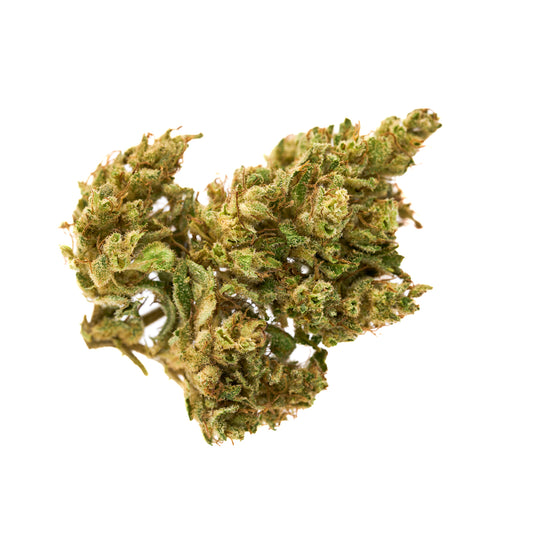
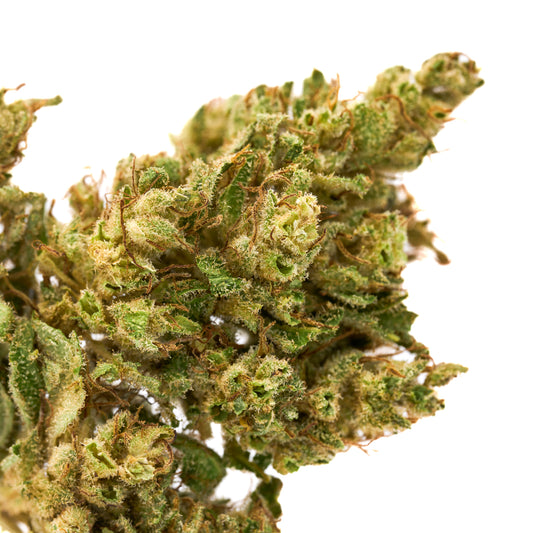
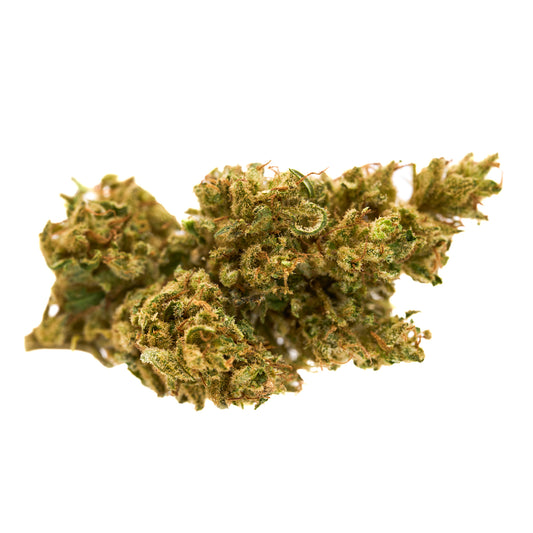
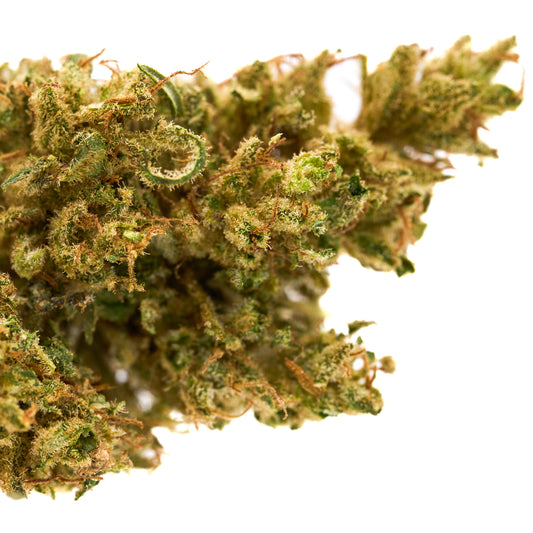
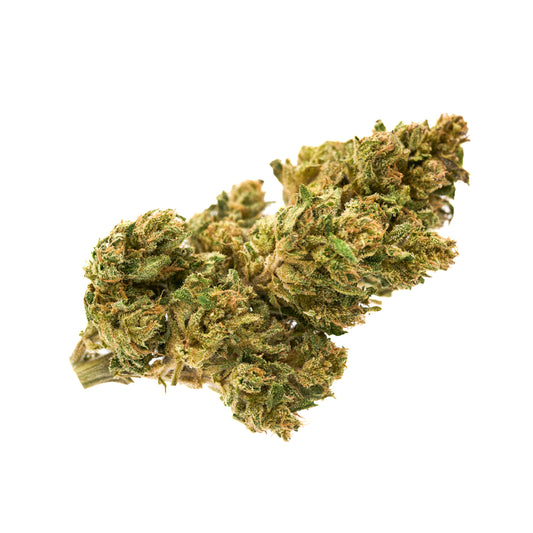
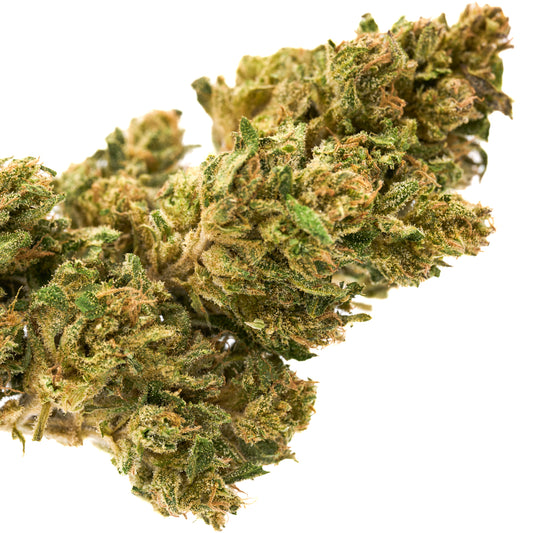



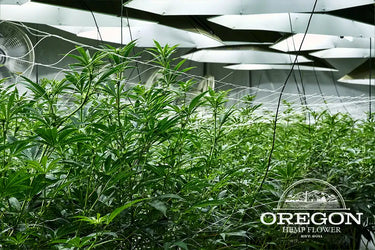

Leave a comment
Please note, comments need to be approved before they are published.